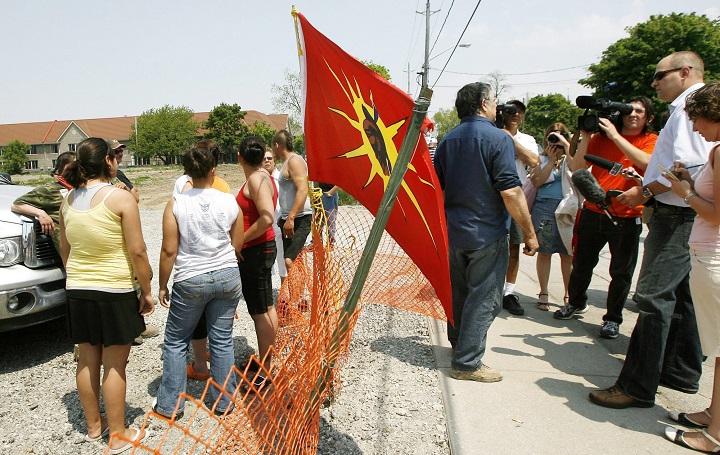Ontario police officers still have the right to impersonate journalists for investigative purposes, but have agreed to guidelines for doing so.

But defence lawyer Peter Rosenthal says the guidelines will do little to change police behaviour. Rosenthal represented Shawn Brant, an aboriginal activist who was filmed by a police officer posing as a journalist during the aboriginal day of action protests in 2007.
“When they make an announcement…that they’ll continue it but only under certain circumstances, it doesn’t really help,” said Rosenthal. “It doesn’t say, don’t do it or you’re going to be punished.”
After a years-long legal battle, the Ontario Provincial Police have signed a Statement of Principles outlining when and how the OPP may act as a member of media, including:
- Officers must have approval before posing as media in an undercover or plainclothes role.
- Officers may not identify themselves as members of the media if they are asked while in a plainclothes surveillance role.
- Officers impersonating journalists must be made aware of the principles.
- The OPP must keep a record of members posing as journalists, including when a member does so without prior approval.
Journalists work as neutral observers in many situations — at protests or political rallies for example — often in large numbers. Such situations enable police to stand among the crowd unnoticed, often even to members of the media themselves.
GALLERY: A history of First Nations’ protests in Canada
“We became aware that at certain occasions, specifically some of the First Nations protests that were taking place, Ipperwash for example, that police had been taking what we thought was the unusual and unjustified step of impersonating journalists in order to get close to the crowd, to infiltrate the scene, and be able to gather intelligence,” said Cal Johnstone, former president of the Radio Television Digital News Association (RTDNA) and current network managing editor at Global News.
“Our concern as an organization at that time is that it would put journalists in danger.”
This presents both ethical and safety issues for journalists. The CBC, RTDNA and Canadian Journalists for Free Expression banded together to make the legal move to stop the practice, arguing it violates the Charter.
The applicants presented multiple situations to argue their case, including:
At the Ipperwash protest a plainclothes police officer on Sept. 5, 1995, told media he was with UPA, the United Press Associates — an organization which does not exist — as he stood among media while video recording protesters.
On June 28, 2007, a plainclothes officer blended in with members of the media in order to video record blockades during the aboriginal day of action.
READ MORE: Ontario court asked to find cops posing as journalists a charter breach
“Our concern was for freedom of expression, really.”
The courts ruled with the OPP last summer, “Primarily on very technical grounds,” Johnstone said.
However, while the groups were considering an appeal, Johnstone says the solicitors for the attorney general reached out with the offer of drafting a Statement of Principles, which comes close to what the RTDNA was asking for initially.
“I think it’s fair to say, while we didn’t get an outright ban on the practice, we did get police to at least recognize that we had a point and that they were prepared to adopt some stringent guidelines on how police should act in these kinds of situations.”
Rosenthal says the guidelines leave the public vulnerable to the same situation as his former client, Brant.
“I just pretended to be part of the media,” OPP Const. Steve Martell recounted, during court proceedings against Brant. Martell told the court it was his idea to pose as a camerman and did not clear the move with his superiors.
Rosenthal says the new agreement doesn’t stop this from happening again.
“It’s a very wishy-washy statement in my view, which does not remove the chilling effect of these two cases.”
Rosenthal says he wants the provincial government to look at the issue and make a regulation, binding the OPP to strictly control the practice, or stop it altogether.
“In my view, you have to unequivocally say ‘it’s just not going to happen.'”
While the case with the OPP appears to be settled for now, Johnstone says there has been discussion of launching similar challenges with other police organizations.
See the Statement of Agreement below:





Comments